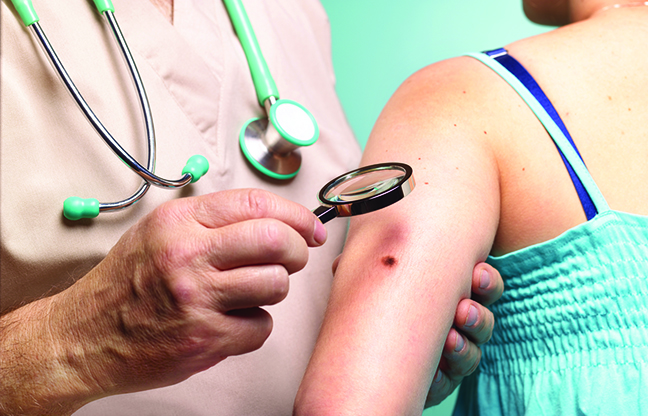How to identify melanoma


The first Monday in May is Melanoma Monday, launching Skin Cancer Awareness Month. Established by the American Academy of Dermatology (AAD) in 1995, this initiative encourages people to check their skin and recognize the warning signs of melanoma, the deadliest form of skin cancer.
Melanoma arises from the uncontrolled replication of melanocytes, the cells responsible for skin pigment, transforming them into cancerous cells.
The American Cancer Society (ACS) highlights melanoma’s danger, because of its potential for quick spread to other body areas. Some types, like nodular melanoma, can spread in weeks, while others may take years to develop.
Melanoma might form within an existing mole or emerge on previously unaffected skin. Although areas frequently exposed to the sun are more prone to melanoma, it can develop anywhere on the body.
“Melanoma doesn’t discriminate, but individuals with lighter or less pigmented skin face a higher risk,” said Patrick Kehoe, MD. “The most avoidable risk factor is longterm sun exposure. Ultraviolet (UV) light from the sun or tanning beds can cause mutations in skin cells, potentially leading to melanoma.”
Monitoring for new or changing moles, spots that grow quickly or alterations in existing skin marks is crucial.
Detecting melanoma early significantly diminishes the risk of it metastasizing to other body parts, potentially saving lives.
For early melanoma detection and to safeguard everyone in the family, remember the ABCDE guide:
• A – Asymmetry. One half of the mole doesn’t match the other.
• B – Border. Edges are uneven, blurred or notched.
• C – Color. The mole has multiple colors, including black, blue, white or gray.
• D – Diameter. Larger than a pencil eraser.
• E – Evolving. Changes in size, shape or color over time.
“Preventing melanoma effectively means protecting your skin from solar radiation,” said Kehoe. “I advocate using sunscreen with a minimum SPF of 30, offering broad-spectrum protection. Reapply sunscreen every two hours, more so after swimming or perspiring, and consider wearing sun-protective clothing.”

